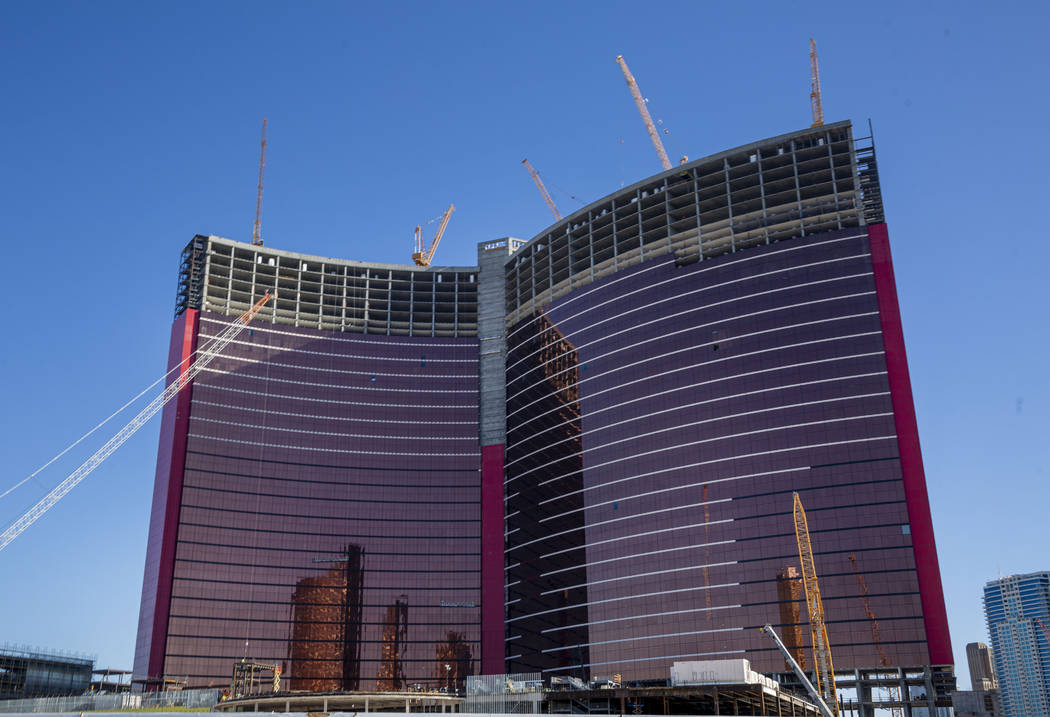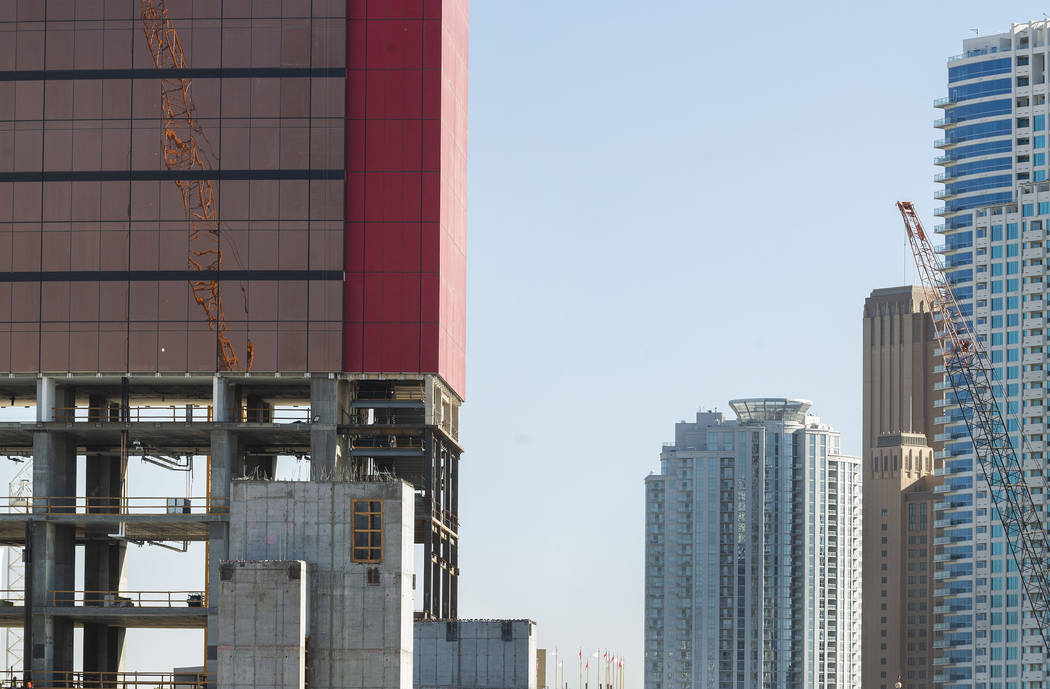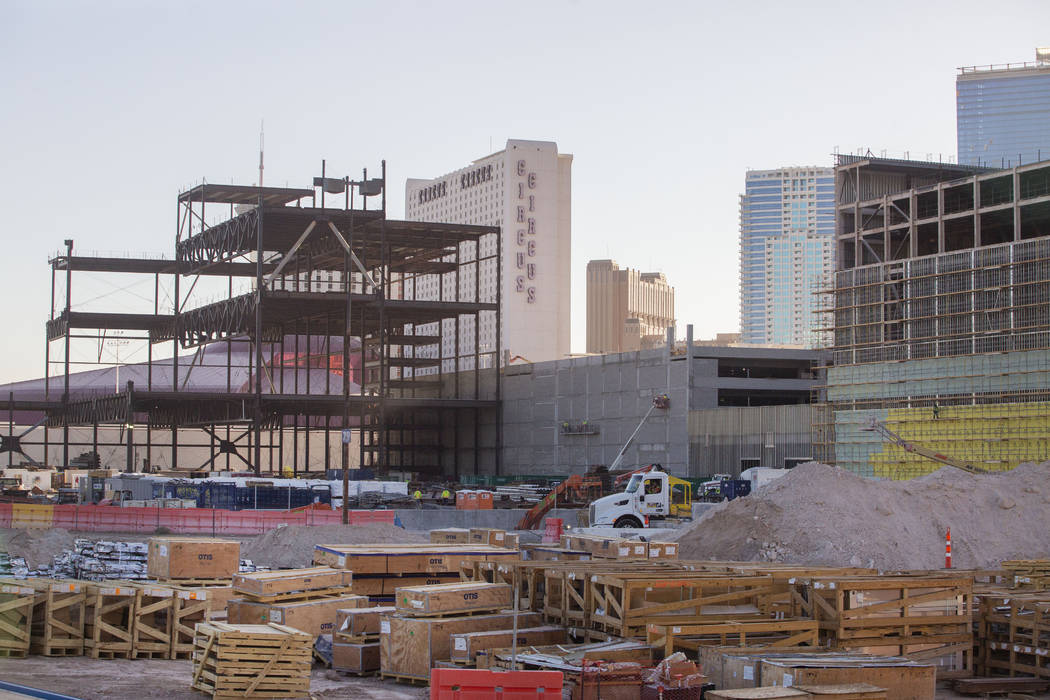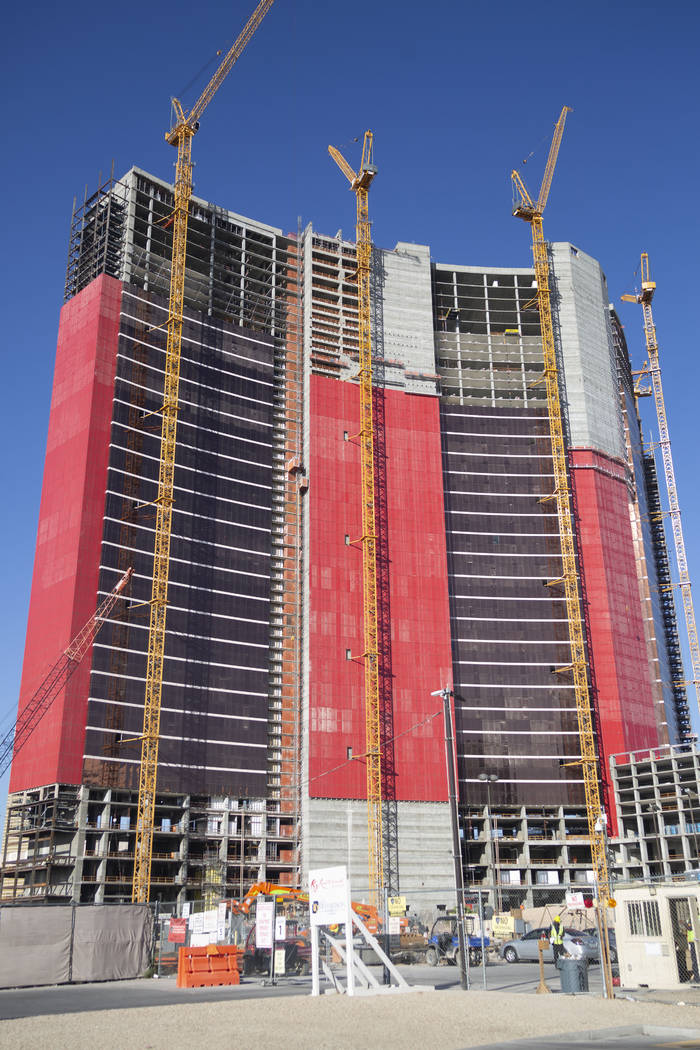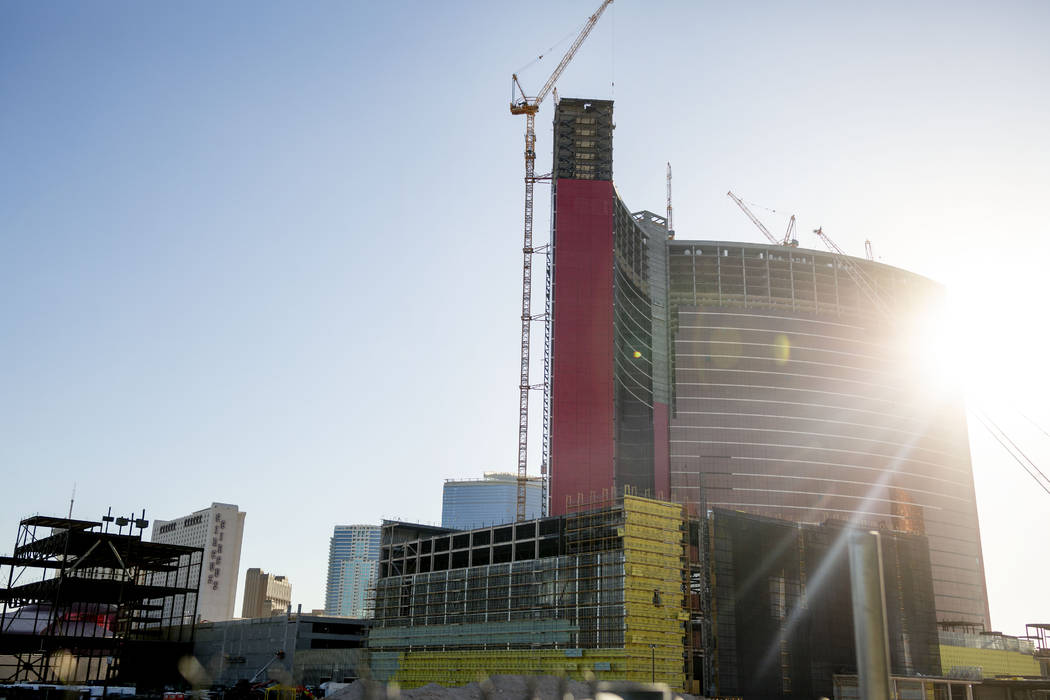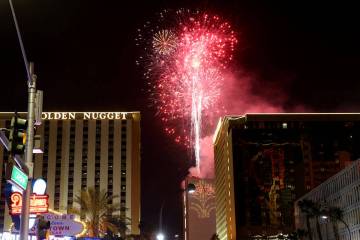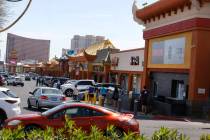Import tariffs, labor shortage concerning for Las Vegas construction firms
Southern Nevada has roughly $26.1 billion worth of major construction projects in the pipeline — a sign, experts say, of a booming economy.
Starting Oct. 1, import tariffs on materials such as steel are expected to increase from 25 percent to 30 percent, and while local construction companies are concerned, they’re also being met with another headwind — a labor shortage.
Some projects in the Las Vegas Valley are starting to feel the impacts.
“We are seeing much more of an impact as it relates to labor than we are as a result of tariffs,” said Sam Nicholson, president of Las Vegas-based Grand Canyon Development Partners. “We recently had a project with a very substantial general contractor who alerted us that they don’t have the labor force now to do this job when we’re ready to break ground in November.”
Principal Analyst Jeremy Aguero of Applied Analysis, whose Las Vegas-based firm tracks the number and cost of major projects in Southern Nevada, said current projects in development haven’t reported significant upward revisions in construction costs, but there have been some increases.
“We are hearing more about projects that are re-evaluating moving from planned to under-construction due to increased development costs,” Aguero said. “However, these increases are tied as much to the cost of labor as they are to the cost of materials generally — not just tariffs.”
Lori Nelson-Kraft, senior vice president of communications and government affairs for the Las Vegas Convention and Visitors Authority, said the authority has “not seen an impact on our construction of the Convention Center expansion as a result of the trade tensions.”
Don Webb, chief operating officer of LV Stadium Co., said construction on Allegiant Stadium is on schedule and on budget, adding that his “focus is (on) keeping it that way.”
Meanwhile, ex-NBA player Jackie Robinson told the Review-Journal last month the estimated cost of his proposed 27-acre project increased slightly because of tariffs and the cost of steel and labor. In fall 2017, Robinson said the massive project on the north end of the Strip would cost about $2.7 billion. It’s now expected to cost just under $3 billion.
“If you’ve already ordered your materials and locked in a contract (and) if the tariffs go into effect, it doesn’t affect you,” said Stephen Miller, director of UNLV’s Center for Business and Economics Research. “If you hadn’t done that, then you’re buying on the market, and it may or may not affect you depending on whether the price goes up or down.”
Resorts World Las Vegas President Scott Sibella said it was able to buy most of its high-dollar construction materials such as structural steel, aluminum and curtain-wall glass before steel tariffs first took effect in March 2018.
“We were aware of the possibility of impending tariffs, but more significantly, we anticipated that other projects coming online in Las Vegas might create substantial supply-demand price increases, therefore we moved forward to procure these high-dollar materials early on,” Sibella said.
Some of the largest developments under construction in Southern Nevada were tight-lipped when it came to disclosing potential cost increases from import tariffs and labor.
Representatives for the $200 million Circa in downtown Las Vegas and MSG Sphere at The Venetian declined to comment.
Last month, some investors were spooked after Madison Square Garden Co. estimated that the MSG Sphere would cost $1.2 billion while general contractor AECOM estimated $1.7 billion. AECOM’s estimate was an initial benchmark proposal: Under its contract, it would receive lower fees if hard construction costs like labor and materials exceeded the incentive benchmark.
“We think the general contractor’s estimate is too high and, as part of the contractual process, are reviewing and challenging our contractor’s estimates and assumptions,” Madison Square Garden Co. CFO Victoria Mink said during its fourth-quarter earnings call.
Trade war
The U.S. is the largest importer of steel, importing an estimated 35 million metric tons in 2017, which accounted for about 33 percent of the total steel used in the country, according to Washington, D.C.-based cost and construction management firm MGAC.
In March 2018, the Trump administration placed a 25 percent tariff on imported steel and a 10 percent tariff on aluminum to protect domestic metal production. The administration later made exceptions for steel imports from countries such as Canada and Mexico, the two largest suppliers of steel and aluminum to the U.S.
But President Donald Trump announced last week he is raising existing and proposed tariffs, after China announced it would add a 5 percent and 10 percent duty on $75 billion of U.S. imports this month.
Trump soon responded on Twitter, saying the existing $250 billion of Chinese goods taxed at 25 percent will be taxed at 30 percent in October. He then tweeted the planned 10 percent tariff on the remaining $300 billion of Chinese goods and products will become 15 percent on Sept. 1 and Dec. 15.
The world’s two largest economies increased taxes on each other in less than 24 hours.
Burke Construction Group President and CEO Kevin Burke said the trade war and the ever-changing tariffs cause uncertainty.
“What we want in business is a predictive operating environment, and that’s what’s hard,” Burke said. “We’re just trying to figure out the playing field that we’re on.”
He said that clients often ask the financial impact of tariffs on a project and he often responds it “gets baked into the cake.”
“It’s not only the tariffs, but it’s the threat of tariffs,” Burke said. “If you’re a materials supplier … you’re going to base (your price) on what you know the costs are today, but you’ve got to hedge a little bit because if you guess wrong, it could substantially impact your business.”
Growing pains
Ken Simonson, chief economist at Associated General Contractors of America, said that construction costs have increased because of tariffs but that it’s too soon to calculate the significance of the impact.
Simonson described the cost constraints on the industry as a “two-stage process” with material costs rising because of tariffs followed by a tightening labor market.
He hasn’t seen owners “scale back or delay a project, but so far it does appear that construction spending remains at a high level.”
Research firm IHS Markit, with Procurement Executive Group, reported on Aug. 21 that U.S. construction cost increases were widespread in August, marking the 34th consecutive month of increases, with survey respondents citing higher costs of materials, equipment and subcontractor labor prices.
Bob Potts, research director for the Governor’s Office of Economic Development, said the local labor shortage is a sign of the state’s economic health.
“We are experiencing a labor shortage in the construction industry because we’re one of the fastest-growing states,” he said.
The concentration of construction workers in Nevada is 17 percent higher than the national average because “we’re growing that much faster than the national average,” Potts said.
“These are the pains you like to have,” he said. “It’s like your kids growing up when they complain about growth pains. It sucks, but it’s a lot better than not having them.”
Nevada added 7,900 construction jobs for a total of 97,400 workers for the 12 months ended July 31, a seasonally adjusted increase of 8.8 percent year-over-year, according to a report from the Associated General Contractors of America.
It’s unclear whether the number of construction jobs added in Nevada the past year is meeting demand, but Simonson said he is seeing the industry facing a pinch nationwide.
A survey released in late August by AGC and Autodesk showed 80 percent of its 1,935 respondents found it more difficult filling hourly craft positions compared with last year and 57 percent said it was more difficult to fill salaried positions. Respondents also said base pay rates for hourly workers and salaried workers have increased because of difficulty filling positions.
“This is not just a shortage of people who can hold a hammer or drive a front-end loader but people who can oversee complex projects,” Simonson said. “The market has gotten tight enough that it appears contractors are raising their bid prices even though materials prices have now flattened out or declined in some cases.”
Nicholson said he has noticed more general contractors opting for a conservative approach with respect to a project’s timeline.
“As projects get extended, it does have an effect, particularly on the commercial side as owners have to carry the money longer before they start earning revenue,” he said. “So it is a compounding effect, and I don’t believe in any way it’s crippling the industry, but it’s something we have to watch carefully.”
The Review-Journal is owned by the family of Las Vegas Sands Corp. Chairman and CEO Sheldon Adelson. The Sphere is a project by Madison Square Garden and Las Vegas Sands Corp.
This story has been updated to reflect the correct name and title of a Grand Canyon Development Partners executive quoted in the article.
Contact Subrina Hudson at shudson@reviewjournal.com or 702-383-0340. Follow @SubrinaH on Twitter.



